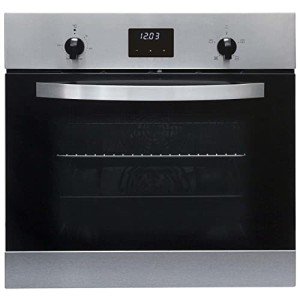The Complete Guide to Ovens and Hobs: Choosing the Right Appliances for Your Kitchen
When it concerns developing culinary work of arts, the importance of quality kitchen appliances can not be overstated. Ovens and hobs are the heart of any kitchen, making it possible for home cooks and expert chefs alike to produce, bake, and sauté scrumptious meals. Understanding the various types of ovens and hobs, along with their features and functionalities, is important for making educated buying choices. This article provides a thorough look at ovens and hobs, assisting you navigate the choices readily available so that you can enhance your kitchen's efficiency and adaptability.
Comprehending Ovens
Ovens are vital for cooking and baking and come in different types to meet diverse culinary requirements. Here is an introduction of the most common types of ovens:
1. Conventional Ovens
Conventional ovens work by warming the air inside with gas or electric components. They are ideal for baking cakes, roasting meats, and cooking casseroles.
2. Convection Ovens
These ovens utilize a fan to circulate hot air, offering an even temperature throughout, which can significantly lower cooking times. They are perfect for baking cookies or roasting vegetables.
3. Microwave Ovens
Microwaves cook food rapidly using electro-magnetic radiation. related are ideal for reheating leftovers or thawing frozen foods but are not appropriate for browning or crisping.
4. Wall Ovens
Including a wall oven into your kitchen design can conserve space and create a streamlined visual. They work just like standard or stoves however are built into the wall for simple gain access to.
5. Variety Ovens
These ovens integrate stovetop burners with an oven, offering adaptability for those who choose a single appliance for all cooking requirements.
| Type | Cooking Method | Best For |
|---|---|---|
| Conventional | Electric/Gas | Baking, roasting |
| Convection | Air circulation | Quick cooking, even baking |
| Microwave | Electromagnetic | Reheating, defrosting |
| Wall Ovens | Electric/Gas | Space-saving, streamlined design |
| Variety Ovens | Electric/Gas | Versatile cooking |
Exploring Hobs
Hobs, also called cooktops or stovetops, offer the surface to prepare pans straight over a heat source. Like ovens, hobs come in different types, which can be classified as follows:
1. Gas Hobs
These hobs utilize a flame for cooking and offer immediate heat control. They are preferred by numerous chefs for their responsiveness and accuracy.
2. Electric Hobs
Electric hobs utilize coils or flat surfaces to heat pans. They use a constant heat source, but they might take longer to cool off compared to gas hobs.
3. Induction Hobs
Induction hobs use electro-magnetic energy to heat pots and pans directly, making them extremely effective and much faster to prepare. They are also easier to clean as the surface area remains reasonably cool.
4. Strong Plate Hobs
These are older technology that utilizes strong metal plates to offer heat. They are durable however are less efficient than modern choices.
| Type | Heat Source | Advantages | Downsides |
|---|---|---|---|
| Gas Hobs | Flame | Instant heat control | Needs gas connection |
| Electric Hobs | Electric coils | Constant heat | Slower to cool off |
| Induction Hobs | Electro-magnetic | Quick cooking, energy-efficient | Requires compatible cookware |
| Strong Plate Hobs | Strong metal plate | Durability | Less effective |
Choosing the Right Appliances
Selecting the perfect oven and hob for your kitchen involves considering various factors:
1. Area and Layout
Step your kitchen area to determine the size and placement of the oven and hob. Ensure there is adequate ventilation, especially for gas appliances.
2. Cooking Style
Consider how frequently you cook and the type of meals you prepare. A stove may suit passionate bakers, while someone who often stir-fries may prefer an induction hob.
3. Energy Source
Choose the energy source that best fits your lifestyle. Gas uses instant control, while electric and induction hobs offer ease of usage and are typically more energy-efficient.
4. Spending plan
Determine your spending plan for kitchen devices. Ovens and hobs vary substantially in cost, depending upon features and brand names. Focus on vital features that fulfill your needs.
5. Features
Try to find functionalities such as self-cleaning alternatives, clever innovation compatibility, specific rack setups for ovens, and safety features for hobs.
Regularly Asked Questions (FAQs)
Q1: What is the distinction between a standard oven and a convection oven?A1: Conventional ovens warm the air inside without fans, while convection ovens utilize a fan to distribute hot air for more even cooking. Q2: Can I use aluminum pots and pans on induction hobs?A2: No, induction hobs need ferrous (magnetic )products like cast iron or stainless steel to work efficiently. Q3: Do gas hobs heat much faster than electric hobs?A3: Yes, gas hobs supply instant heat, making them quicker for cooking compared to electric hobs. Q4: Is it safe to utilize a microwave oven?A4: Yes, when utilized according to the producer's guidelines, microwave ovens are thought about safe for cooking.
Q5: How typically must I clean my oven and hob?A5: For optimum performance, tidy your oven routinely, especially after spills. Hobs should be cleaned down after each use
to prevent buildup. Ovens and hobs
are indispensable components of a fully equipped kitchen. Comprehending the numerous types, their performances, and the considerations included in buying
them can considerably enhance cooking experiences. Whether one is a casual home cook or an expert chef, investing time in selecting the best devices can cause cooking success and satisfaction in the kitchen. By focusing on functions that align with your cooking design, energy sources that fit your home, and spending plan considerations, you can develop an effective office that motivates culinary imagination.

